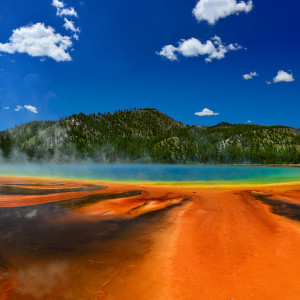Yellowstone will be “a public park or pleasuring-ground for the benefit and enjoyment of the people.” So wrote Congress in 1872, establishing the first national park in the world. Since then, Congress has designated 58 more national parks, created the National Park Service, and established many other protected lands for public use. The national park idea has been called America’s best idea and has since spread across the globe — national parks are found in more than 100 countries.
Under the Trump administration, the future of our national parks and 650 million acres of federal public lands are at stake. Members of the administration and Republicans in Congress suggest changing our longstanding system in two ways: selling public lands and giving them back to the states.
Supporters of a first approach argue that we should sell at least some of the public lands, perhaps including national parks, as a way to reduce the federal debt. That’s right, sell Yellowstone, the Grand Canyon, the Great Smoky Mountains, Acadia. The parks would go to the highest bidder, and the funds to the treasury.
Rep. Jason Chaffetz of Utah, a Republican, recently introduced a bill calling for the sale of 3.3 million acres of federal land — but no parks — in 10 states with the proceeds used to reduce the public debt. Less than a week later, he withdrew the bill in light of protests from conservationists and hunters alike in Helena, Montana, and Santa Fe, New Mexico.
The closest the federal government has come to selling such a substantial part of the public lands before that bill was during the Reagan administration. The Forest Service identified 5 percent of its holdings across the nation for sale. When Congress held hearings, public opposition from outdoor users of the lands was so strong that the process stopped.
Instead of selling, some suggest the federal government should transfer public lands to the states. In fact, the Republican platform called upon Congress to “immediately pass universal legislation … requiring the federal government to convey certain federally controlled public lands to the states.” Many states, like Utah, have passed laws calling for the federal government to “return” these lands to the states. The federal treasury would gain nothing from this exchange — it would simply be a gift to the states. The House recently made a rule change to make these transfers easier.
Western states have made these demands in the past. In the Sagebrush Rebellion of the late 1970s and early 1980s, several Western states passed laws claiming federal lands, some sued claiming the lands belonged to the states, and a few members of Congress introduced legislation to transfer land to the states. Those claims failed in the courts, in Congress, and with the public.
But now these efforts have returned with a vengeance, with more friends in Congress and perhaps the White House. Although President Trump stated in January 2016 that he wanted to keep federal lands under federal control, this puts him at odds with many in his party, free marketeers, states’ rights advocates, and Western Republicans. Will his position evolve?
Large-scale disposal of public lands, whether by sale or transfer to the states, whether national parks or forest and rangeland, is a bad idea.
These lands are an important part of what makes America America. They’re open to all, not just the wealthy. We hike and hunt there. We take our children to marvel at some of the most beautiful landscapes in the world. These lands provide our country with valuable services — cleaning our air and water, storing carbon, reducing floods. They are the home to wildlife large and small, to forests and wildflowers.
And perhaps most significantly, in the words of writer Wallace Stegner, these public lands are part of our “geography of hope.” They are democratic, they remind us both where we came from and where we can go, and they are a place for us to connect nature and culture. Federal public lands should remain federal public lands, and we should let those in power hear our voices.

